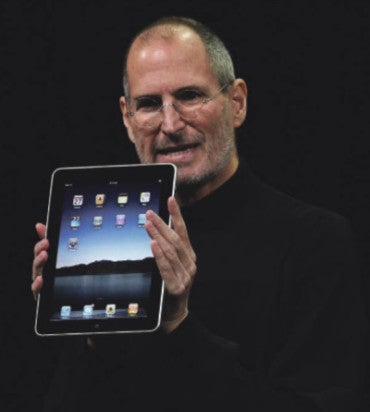Think Amazon ten years from now with its packages delivered by drones. Think Tesla with its electric vehicles and space travel. But what about Apple? Does yet another iteration of the iPhone count as innovation?
Apple used to be a byword for the future. The 1984 Macintosh, complete with mouse, was one of the first computers designed for the general public. The iPod, the MP3 player which went on sale in 2001, eventually killed off the minidisc.
And though more recent innovations continue to dominate financially, they have failed to capture the public imagination. Charlie Widdows, founder of the idea management platform Solverboard, can’t remember a “gasp” moment since the iPad.

Morgan Stanley analysts predict that Apple will manage to ship 262 million iPhones in 2018, but the iPhone X’s facial recognition was one of the key features of the Samsung 8 smartphone released more than six months earlier.
However, the delay is not damaging, says Caspar Thykier, founder of the augmented reality app Zappar, which closed a $3.75-million series-A funding deal in February. Apple’s huge market share means “they don’t need to be the first, only the best”, he says.
Innovation at Apple is characterised by poise, grace and thoughtfulness
Innovation at Apple is characterised by poise, grace and thoughtfulness, says Mr Thykier. The iPhone’s dual-depth cameras detect changes in appearance and work in total darkness. Innovation is not about “confusing activity with progress”, he insists.
Michael Husmann of Kodama thinks Apple is moving backwards. The founder of the sleek 3D printer Obsidian worked at Apple as a project manager from 2008 to 2013. “Sometimes it feels like Apple is becoming the new IBM, clinging on to safe products and markets instead of seeking the authentic innovation that the company used to have,” he says.
On November 28, it emerged that the latest Apple software suffered from a security flaw. Apple’s record is not immaculate; remember 2012 when Apple Maps directed you to nowhere.
Mr Husmann says: “There’s a certain disconnect between products, something that never existed in the past.” He dates the shift to the loss of Steve Jobs and the promotion of former chief operating officer (COO) Tim Cook. “Until Jobs passed away, I was proud working for Apple and wouldn’t have even considered leaving,” he says. Then Apple was less an innovative business and more a business run by an innovator. Operations require different skills and putting a COO in charge of a company known for making big bold moves is going to change the whole identity, says Mr Husmann.

How should Apple remain innovative? Perhaps the company should call on Elon Musk of PayPal, Tesla Motors and SpaceX fame? Mr Widdows sees some synergy. Apple’s innovation resides in systems which allow “people to work with technology in a more intuitive way”. Likewise, Tesla has “created a beautiful way of producing energy delivered by products you want to own”, he says.
But flashy, risky innovation isn’t Apple’s style. Their innovation lies, Mr Widdows says, “in the way they protect and manage brand value”. Musk might be too big a shock to the system.
Jobs was a leader as well as an innovator. Managing and recruiting talented people in a big organisation presents a different challenge, says Mr Husmann. You don’t need a blue-sky thinker, you simply need a creative chief who prioritises, encourages and enables innovation. The new Apple headquarters in Cupertino, California was designed by Jobs to foster this type of communication and collaboration.
There’s so much hype, you exist in a constant state of disappointment
Apple’s traditional secrecy and their huge cash reserves mean their capacity for innovation is both unpredictable and limitless. At the Apple Worldwide Developers Conference in June, two major products were announced.
Mixed reviews for HomePod, their smart speakers, show Apple’s real Achilles’ heel, says Mr Thykier. “There’s so much hype, you exist in a constant state of disappointment.” Tellingly, a statement from Apple pushed back the HomePod release: “We need a little more time before it’s ready for our customers,” Apple said.
The augmented reality platform ARKit was better received than Google’s ARCore. The fragmented Android market makes it difficult for Google to disseminate their product – it’s only available on Samsung Galaxy S8 and Pixel phones – while the closed Apple ecosystem means ARKit works on most hardware. The ready-made market incentivises developers to create augmented reality content; its take-up will shape the technology on which it runs, keeping Apple innovating.
Apple needs to play to its strengths in new sectors to remain innovative, Mr Husmann concludes. “If the company manages to show their old boldness without clinging on to old products, they have the scale to generate massive adoption, fast.”


